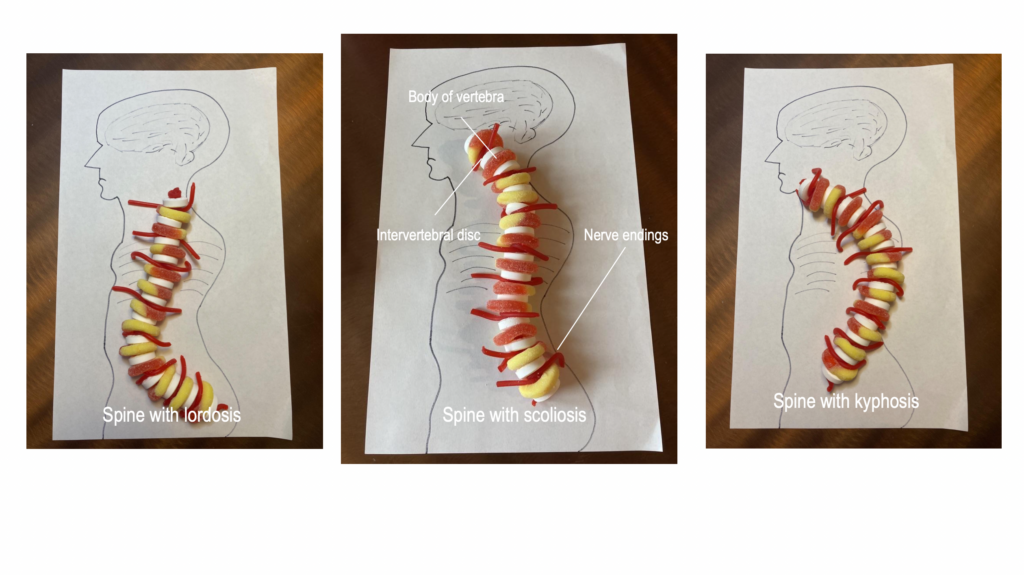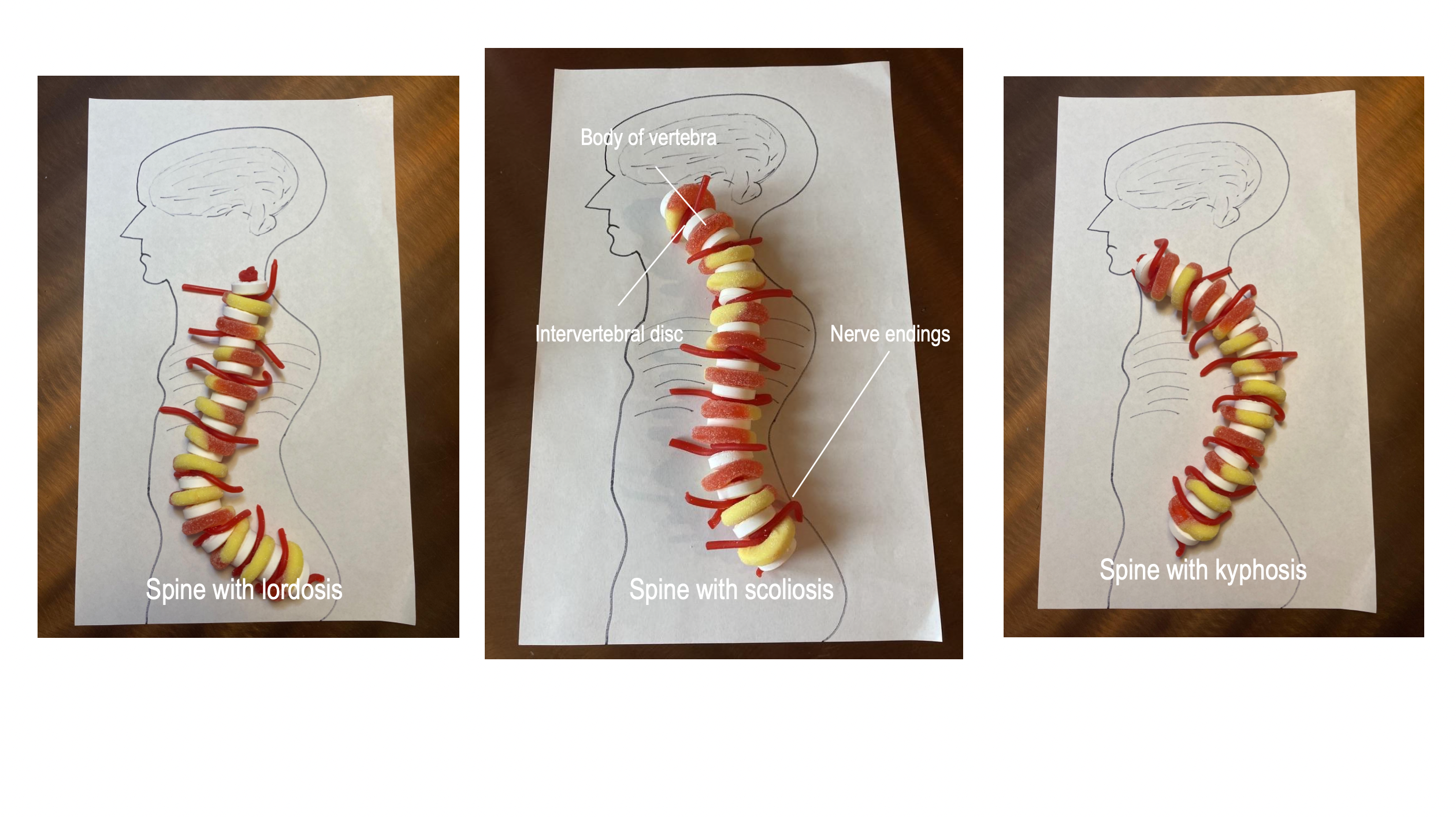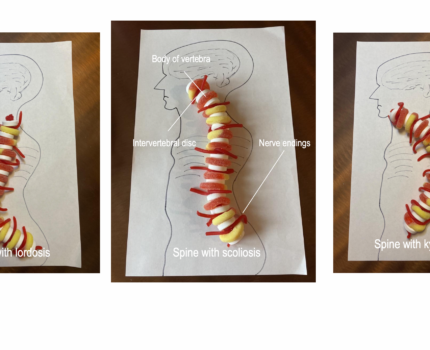The spine is one of the most important structures in the body. It connects the brain and spinal cord to the other parts of the body. The four major parts of the spine are the cervical region, thoracic region, lumbar region, and the sacral region. There are many disorders that are associated with this bone that makes up the axial skeleton. Three of the most common are called scoliosis, kyphosis, and lordosis. Scoliosis is when the spine is curved to the side when looking at a person from the back. It is very common for adolescents to develop this disorder because this is when the human body goes through a significant growth period. Kyphosis is when the upper part of the spine curves forward, causing a person to hunch over. Lordosis is when the lumbar part of the spine curves inward. There are natural curves in the human spine, but when a curve causes pain and limited range of motion, one probably has one of these three disorders. It is important to add that people can have a hyper extension (where the curve is greater than normal) of the spine or a hypo extension (where the curve is less than normal) of the spine. In a single vertebra in the spine, there is the body of the vertebra (peach ring candy), an intervertebral disk (mint candy), and nerve endings (red candy) . The body of the vertebra is the largest part, bearing about eighty percent of the weight when a human stands up. The vertebra is shaped like a bird foot. It has a circular shape with three pieces coming out of it. It also provides a place for another vertebra to attach to. The intervertebral disc cushions the vertebra and absorbs shock. It is in a circular shape. The nerve endings help send messages from the brain to other parts of the body. These nerve endings are stringy shapes that extend from the vertebra. It is important for people who are concerned about the shape of their spine to see a spinal doctor. Some of the symptoms that are associated with these three disorders are loss or increase in range of motion in any area of the back. One of the main reasons that I chose to discuss this topic is because of a recent injury that I got in my lower back. I have a slight scoliotic curve in my spine, although this did not contribute to the injury. At first, the neurosurgeon thought that the location of pain could be due to a fracture in one of the vertebrata of the spine. Later, I found out that this injury was because of a muscular imbalance. So many people that I know have pain in their back, and most do not understand why until they see a specialist. To correct the spine, some people undergo surgeries or wear a back brace, while others cannot do anything about it. This project has to do with the course objective of knowing the parts of the bone and their shape.

References
American Association of Neurological Surgeons. (n.d.). A neurosurgeon’s overview of the
anatomy of the spine and peripheral nervous system.
Bridwell, K. (2019, September 10). Spineuniverse.com.
spineuniverse.com. https://www.spineuniverse.com/anatomy/intervertebral-discs
MedlinePlus – Health Information from the National Library of
Medicine. (2013, September 1). Adolescent idiopathic scoliosis: MedlinePlus genetics.
https://medlineplus.gov/genetics/condition/adolescent-idiopathic-scoliosis/
Root Title. (n.d.). Nerve endings.
https://wwwmgs.bionet.nsc.ru/mgs/gnw/trrd/thesaurus/Nt/end.html
Scoliosis. (2021, July 16). Lordosis, kyphosis, and scoliosis: Know the differences.


The objective of Deborah’s project was to expand on knowing the parts of the bone and their shape. In order to do this she described and demonstrated some different abnormalities which the spine can undergo. The spine consists of the cervical region, thoracic region, lumbar region, and sacral region and connects the brain to other parts of the body. Three types of disorders that correspond with the spine are lordosis, kyphosis, and scoliosis. A spine diagnosed with scoliosis will have a curve to the side, while a spine with kyphosis will have a forward curve in the upper region of the spine, and a spine with lordosis will have a lumbar region that curves inward. Scoliosis is often a result of the growth period which adolescents undergo. These unnatural curves may possibly cause pain or a limited range of motion for the body. A vertebra in the spine consists of a vertebral body, an intervertebral disc, and nerve endings. The vertebral body is large and supports much of the weight of the body. The intervertebral disc is circular and cushions the vertebrae. The nerve endings are stringy and extend from the spine in order to send messages throughout the body. In order to attempt to correct the spine from some of these symptoms via medical techniques such as getting surgery or wearing back braces while some do not have the option to try to correct it and must live with the disorder.
Great work and I enjoyed learning from your project Deborah!